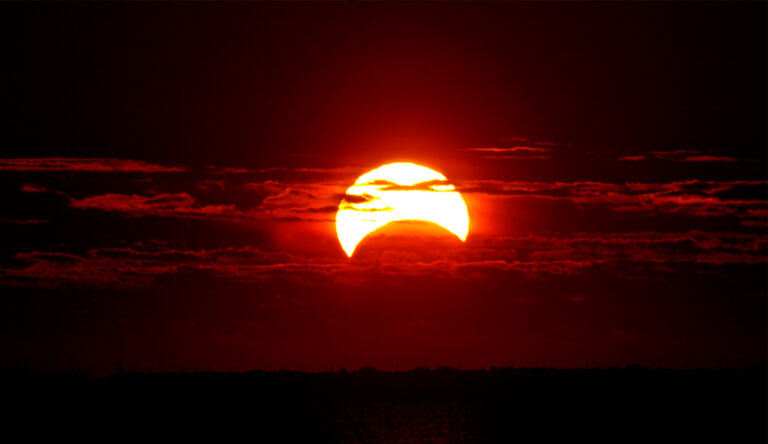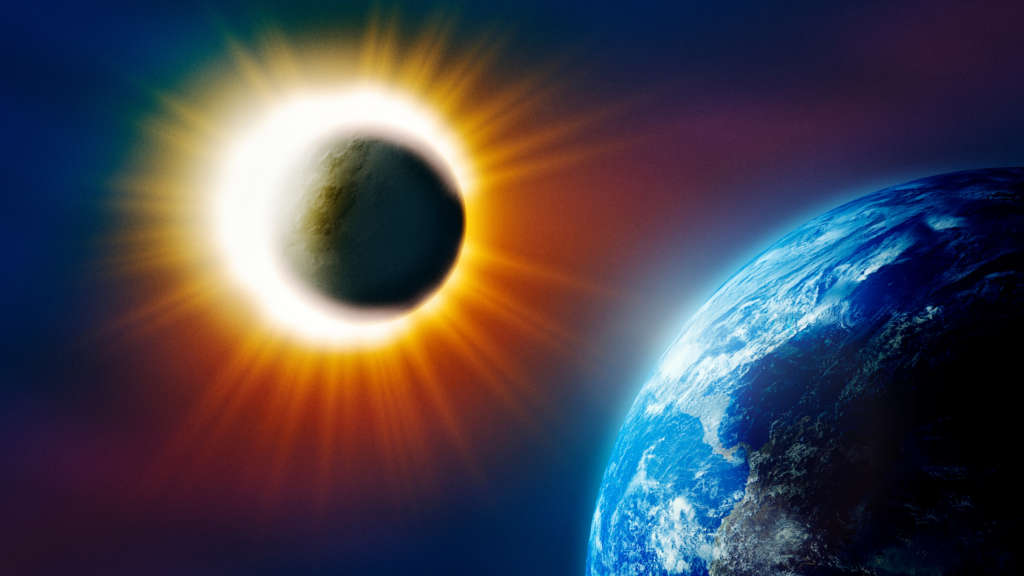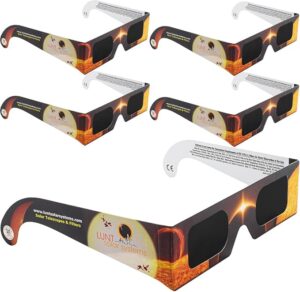There’s a certain magic in the air when day momentarily turns to night during a total solar eclipse. As the moon passes directly between the Earth and sun, its dark silhouette blocks out the brilliant solar disk, allowing the sun’s ethereal outer atmosphere to come into view. It’s a humbling and awe-inspiring astronomical alignment that sparks a dizzying psychedelic display of dancing shadows and glowing plasma tendrils in the sky.

If you haven’t witnessed this spellbinding celestial event, you’re not alone. For all their grandeur, total solar eclipses visible from any given location are among the rarest of predictable natural phenomena. So when is the next opportunity to witness an eclipse from your hometown? And what factors make these “Dark Miracles” so infrequent yet also so precisely calculable? Let’s explore the science behind these cosmic spectacles.
What Causes a Solar Eclipse?
A solar eclipse happens when the new moon passes directly between the sun and Earth, temporarily blocking out all or part of the sun’s light and casting a small area of the planet into shadow. But this celestial syzygy is only possible because of some extraordinary coincidences.
The moon’s diameter is about 400 times smaller than the sun’s, but the sun is also around 400 times farther away. This makes the apparent sizes of the two bodies in our sky roughly match up, with the moon capable of perfectly covering the sun’s disk during an eclipse.
The moon’s orbit around Earth is also tilted about 5 degrees relative to the plane of Earth’s orbit around the sun. This means the moon’s shadow usually falls above or below Earth during the new moon phase when an eclipse could occur. It’s only during the points in the moon’s elliptical orbit when it crosses Earth’s orbital plane that its shadow touches part of our planet, allowing an eclipse to be seen.
These special alignments resulting in a total solar eclipse can only happen during the new moon phase and are called nodes – derived from the Latin word “nodos” meaning knuckle or knot. There are only two node points in the moon’s orbit when it crosses Earth’s orbital plane around the sun.
The Mechanics and Types of Solar Eclipses
When the moon’s dark umbra (total shadow) falls on parts of Earth during a solar eclipse, there are a few distinct variations of the event observers may see:
Total Solar Eclipse: This is the granddaddy spectacle where the moon fully covers the sun’s bright disk and only the wispy solar atmosphere called the corona is visible for up to around 2 minutes and 40 seconds. This happens along a narrow corridor known as the path of totality across Earth’s surface. Outside this path, observers see a partial eclipse.
Annular Solar Eclipse: This happens when the moon is farther away from Earth and appears slightly smaller, so its dark shadow doesn’t quite cover the entire sun. This creates a brilliant annulus or “ring of fire” around the moon’s dark disk.
Partial Solar Eclipse: Outside the path of totality or annularity, a solar eclipse appears as a crescent sun being steadily covered or uncovered by the moon over a few hours.
Solar eclipses always happen in pairs, spaced about two weeks apart. The reason is that the moon’s orbit crosses Earth’s orbital plane two weeks after the new moon creates the first eclipse of the pair. Eclipses come every 5.5 to 6.5 months or so.
The Moon's Shadow Dance
So why don’t solar eclipses happen every single month at new moon from any given location? The reason is that while the moon’s orbit brings it between the Earth and sun each month, its tilted path means its small shadow only touches our planet occasionally.
Over 18 years and 11 plus days, the moon’s precessing orbit traces out a zig-zag pattern relative to the Earth’s orbit around the sun. After that period, the moon’s orbit has completed one full cycle, ensuring its shadow will sweep over roughly the same locations on Earth again. This interval is known as a saronic cycle.
The Frequency of Solar Eclipses
With all these complex geometries in play, it’s clear that solar eclipses are far from regular events for any specific place on the globe. But just how infrequent are they?
On average, there are between two and five solar eclipses visible each year from somewhere on Earth, with totality lasting up to 2 minutes and 40 seconds at most. Total solar eclipses specifically occur roughly once every 1.5 years.
However, the odds of experiencing this transcendent celestial sight from your hometown or city are incredibly low. For any given location on Earth, a total solar eclipse will only be visible on average once every 375 years or so!
That’s because the moon’s umbra shadow footprint is remarkably small, with the path of totality just 16 to 167 miles wide as it rapidly sweeps across the globe at over 1,000 mph. Outside of this corridor, even just 60-70 miles in any direction, viewers would see a partial solar eclipse at best.
So despite their infrequency and fleeting nature, total solar eclipses are still predictable celestial events modern science can anticipate decades in advance. NASA and other agencies work out the paths and timing of both total and annular eclipses years ahead, giving eclipse chasers plenty of opportunity to plan travel into the path of totality.
For example, the next total solar eclipse visible from parts of the United States isn’t until April 8, 2024, when the moon’s shadow will sweep from Mexico up through the central U.S. and into the Northeast. Portions of 13 states will get to experience over 2 minutes of daytime darkness as the eclipse’s path of totality stretches nearly 120 miles wide.
But if you miss that event, the wait won’t be too long – just over 3 years later on August 12, 2027, another total solar eclipse will be visible from parts of the Western U.S., Northern Mexico, and Eastern Russia.
Partial solar eclipses that obscure only a portion of the sun are more common, occurring at least once per year on average globally. However, from any given location, even a partial eclipse is still a relatively infrequent event seen only about once every 1.5 years.

So while our sun may be eclipsed somewhere on Earth almost annually, these celestial events are tantalizingly elusive for any particular observer. Just a few hundred miles can be the difference between witnessing the sun’s blazing glory reduced to a diamond ring or experiencing the full moon’s cool shadow as it utterly blankets our nearest star in the heavens.
The Awe and Wonder of Eclipses
Even though seeing a total eclipse requires some travel planning and patience, the spectacle is well worth it. In those few minutes of cosmic choreography, the day is transformed into an eerie a twilight as the spreading umbra of the moon obliterates the sun’s fierce rays. Surrounding you is a 360-degree sunset, with the ghostly corona shimmering around the black hole silhouette where the sun once blazed.
Animals and insects are famously fooled into twilight behavior by the dimming light, and temperature drop noticeably. Strange undulating shadows and beads of light may appear on the ground as the moon slowly covers the sun’s disk. For those brief minutes, the routinely bright and steady sun seems to have been forever extinguished. It’s a humbling intersection of the forces that provide light and life on one side, and the mysteries of deep cold space on the other.
So while total solar eclipses may be one of the rarest predictable astronomical events, they remain among the most incredible sights nature has bestowed upon humanity. If you have the opportunity to travel into the path of the moon’s shadow, embrace the celestial choreography and allow the sudden midday darkness to inspire awe, curiosity and a profound appreciation for the cosmic ballet of worlds aligning to eclipse the source of almost all energy on our planet.

Hey there! We hope you love our fitness programs and the products we recommend. Just so you know, Symku Blog is reader-supported. When you buy through links on our site, we may earn an affiliate commission at no extra cost to you. It helps us keep the lights on. Thanks.
Disclaimer: The information provided in this discussion is for general informational and educational purposes only. It is not intended as medical or professional advice. Only a qualified health professional can determine what practices are suitable for your individual needs and abilities.

